2012-2016 KLIMT AND HIS WOMEN by the Austrian Mint
With a debut back in 2012, the Austrian Mint embarked on a five-piece set of coins to be released one-per-year, featuring Gustav Klimt’s paintings, specifically from a particular phase of his career when women were the focus of his attention, called his “golden phase”. Titled Klimt and his Women, the 10g proof-finish coins have won multiple awards for their superb implementation. The second coin in the series, The Expectation, won the 2015 Krause Publications coin of the year award, and the third coin, Judith II, just won the 2016 Most Artistic Coin award.
Struck in Proof quality with a maximum mintage of 30,000, each coin comes in a case complete with a numbered certificate of authenticity. The coins are designed by three of the Austrian Mints’ best designers, Mag. Helmut Andexlinger, Herbert Wahner and Thomas Pesendorfer. The reverse sides feature a representation of a prominent part of the particular piece of art being celebrated. The obverse depicts something related, such as an image of Klimt or some other detail from that, or a related piece of art. All of the coins are very highly regarded and for good reason. The strikes of these, like pretty much anything from the Austrian Mint, are of the highest quality, and it’s safe to say that admirers of Klimt’s work will find much to like here.
The series is now complete, but all of the coins are still available, hardly surprising given the relatively high mintage. Prices vary as the selling price is linked to the spot price of gold which obviously varies over time.
2012 PORTRAIT OF ADELE BLOCH-BAUER
MINTS DESCRIPTION
A prime example of Klimt’s “golden phase”, Portrait of Adele Bloch-Bauer I is the first of the artist’s masterpieces to feature in our superlative Klimt and his Women series. It was also the most expensive painting in the world when purchased for the Neue Galerie in New York at a price of $135 million in 2006.
Completed in 1907, the painting took longer than any of Klimt’s other works to finish and features the only model to be painted more than once by the Viennese master – the wife of wealthy industrialist and patron of the arts Ferdinand Bloch-Bauer.
Ethereal and enigmatic, the portrait was created from oils and gold leaf, which is why it has been possible to reproduce it so magnificently on the reverse of this 50 euro gold coin. The elaborate Jugendstil ornamentation of the painting’s background provides an intricate contrast to the smoother relief of the subject’s head in the foreground. A handsome portrait of the artist himself is reproduced in profile on the coin’s obverse to similar effect.
Designed by Thomas Pesendorfer and Herbert Wahner.
2013 THE EXPECTATION
MINTS DESCRIPTION
Few painters have succeeded in portraying the female form with such aplomb as Gustav Klimt. A case in point is The Expectation, which features in all its glory on the second in our stunning five-piece Klimt and his Women series of 50 euro gold coins celebrating the 150th anniversary of the Viennese master’s birth.
Clearly inspired by Egyptian art, The Expectation is a prime example of how Klimt found inspiration in the past yet succeeded in creating something completely modern and original. It also exemplifies Klimt‘s trademark swirling decorative designs, as does The Tree of Life on the coin‘s obverse.
Both pictures are mosaics from Klimt‘s famous frieze on the walls of the Palais Stoclet in Brussels. Commissioned by the wealthy Belgian banking family who owned the Palais, work on the Stoclet Frieze was actually undertaken by the Wiener Werkstätte, the ground-breaking Viennese modernist workshop of visual artists.
Designed by Thomas Pesendorfer and Mag. Helmut Andexlinger.
GUSTAV KLIMT: THE ARTIST
Gustav Klimt (July 14, 1862 – February 6, 1918) was an Austrian symbolist painter and one of the most prominent members of the Vienna Secession movement. He remained with the Secession until 1908. The goals of the group were to provide exhibitions for unconventional young artists, to bring the works of the best foreign artists to Vienna, and to publish its own magazine to showcase the work of members. It was while a member that Klimt entered what has become known as his ‘Golden Phase’, many of his paintings containing gold leaf.
Klimt’s paintings have brought some of the highest prices recorded for individual works of art. In November 2003, Klimt’s Landhaus am Attersee sold for $29,128,000, but that sale was soon eclipsed by prices paid for other Klimts. In 2006, the 1907 portrait, Adele Bloch-Bauer I, was purchased for the Neue Galerie New York by Ronald Lauder reportedly for US $135 million, surpassing Picasso’s 1905 Boy With a Pipe (sold May 5, 2004 for $104 million), as the highest reported price ever paid for a painting.
On August 7, 2006, Christie’s auction house announced it was handling the sale of the remaining four works by Klimt that were recovered by Maria Altmann and her co-heirs after their long legal battle against Austria. The portrait of Adele Bloch-Bauer II was sold at auction in November 2006 for $88 million, the third-highest priced piece of art at auction at the time.
The Apple Tree I (ca. 1912) sold for $33 million, Birch Forest (1903) sold for $40.3 million, and Houses in Unterach on Lake Atter (1916) sold for $31 million. Collectively, the five restituted paintings netted more than $327 million. An unremarkable Attersee painting fetched $40.4 million at Sotheby’s in November 2011.
Klimt died in Vienna on February 6, 1918, having suffered a stroke and pneumonia due to the influenza epidemic of that year.
2014 JUDITH II
MINTS DESCRIPTION
Gustav Klimt did not just paint women, he revolutionised the world’s image of them. The third coin in our incomparable Klimt and his Women series, Judith II, in which the saviour of the Israelites is portrayed as a chilling femme fatale, shows this to magnificent effect.
Painted in 1909, the life-size portrait shows a gaunt and bushy-haired Judith looking to her right as she clutches the severed head of Holoferenes, an Assyrian general who was threatening to destroy her home city of Bethulia. Klimt’s customary swirling art nouveau ornamentation features on this side of the coin as well as on its obverse, which is graced with Nuda Veritasfrom Klimt’s golden phase.
Painted in 1889, the long-haired beauty holding a mirror shows artistic truth without compromise and is a perfect example of Klimt’s artistic vision. This was a vision that led the painter to co-found the Vienna Secession, the artistic movement that rejected the conservatism of the early 20th-century Viennese art world.
Designed by Mag. Helmut Andexlinger and Herbert Wahner.
2015 MEDICIN
MINTS DESCRIPTION
Painted between 1900 and 1907 to decorate the ceiling of the assembly hall of the University of Vienna, Gustav Klimt’s Faculty Paintings were the Viennese master’s last public commission. Klimt’s critics believed they broke cultural taboos and pushed the boundaries of obscenity, but their sensual beauty is plain to see on Medicine, the fourth coin in our award-winning Klimt and his Women series.
Gustav Klimt was no stranger to controversy, but the outrage caused by his Faculty Paintings was even debated in the Austrian Parliament and became a political issue. The paintings were never actually used for their intended purpose as Klimt returned his fee and refused to deliver his artworks, which were eventually burnt by the Nazis at the end of the Second World War. A detail from Klimt’s Jurisprudence, in the form of the Eumenides, the Greek deities of vengeance, graces the coin’s obverse. Stylised snakes accentuate Klimt’s customary swirling patterns of the gorgon’s hair in the rectangular centre, while to the right stands the goddess of law. The reverse shows a detail from Medicine as Hygieia, daughter of the Greek god of medicine, with the Aesculapian snake wound around her arm and the cup of Lethe in her hand. The letter M, the fourth letter in the word “Klimt”, appears at the foot of the coin.
Designed by Thomas Pesendorfer and Herbert Wahner.
2016 THE KISS
MINTS DESCRIPTION
Women may have dominated the work of Gustav Klimt, but his most famous painting also features a man. Many experts believe the man in The Kiss is Klimt himself and that the woman he is kissing is Emile Flöge, Klimt’s partner in real life. Whether or not that is the case, like the Mona Lisa in Paris, The Kiss still has the power to make people from all over the world flock to see it.
No other work of Klimt’s could provide a more fitting climax to the Austrian Mint’s Klimt and his Women series, which began in 2012 as a celebration of the 150th anniversary of the Viennese master’s birth and is now drawing to a close.
Painted in 1908-09, The Kiss is on permanent display at the Belvedere palace and museum in Vienna. One of the world’s most iconic paintings, The Kiss opens up manifold associations of love, happiness and hope, yet it is Klimt’s 1902 portrait of Emilie Flöge which experts often consider his best portrait of a woman, and which forms the centre piece of the coin’s obverse. The artist himself was of the opinion that no painting could ever convey the charm of the real Emilie, who was the most important of the many women in Klimt’s life.
Designed by Thomas Pesendorfer and Herbert Wahner.
PRESENTATION
Each coin comes in one of the Austrian Mint’s standard, red coin boxes, popular with collectors as they’re small, neat, and standardised making storage simple. If you’re collecting a set however, it seems a no-brainer that you’d pick up one of the excellent boxes produced just for the purpose.
Made with a wood grain supposedly similar to some Jugendstil (German for Art Nouveau) furniture, the box is lined with velvet and contains two boxes to store the booklets/certificates. The box sits in a coloured slipcase decorated with an image of Klimt’s The Kiss. It sells for €66.00 from the Austrian Mint webstore.
SPECIFICATION
| DENOMINATION | COMPOSITION | WEIGHT | DIAMETER | FINISH | MINTAGE | BOX / COA |
|---|---|---|---|---|---|---|
| €50 EURO | 0.986 GOLD | 10.14 g (10.0g fine) | 22.0 mm | PROOF | 30,000 | YES / YES |



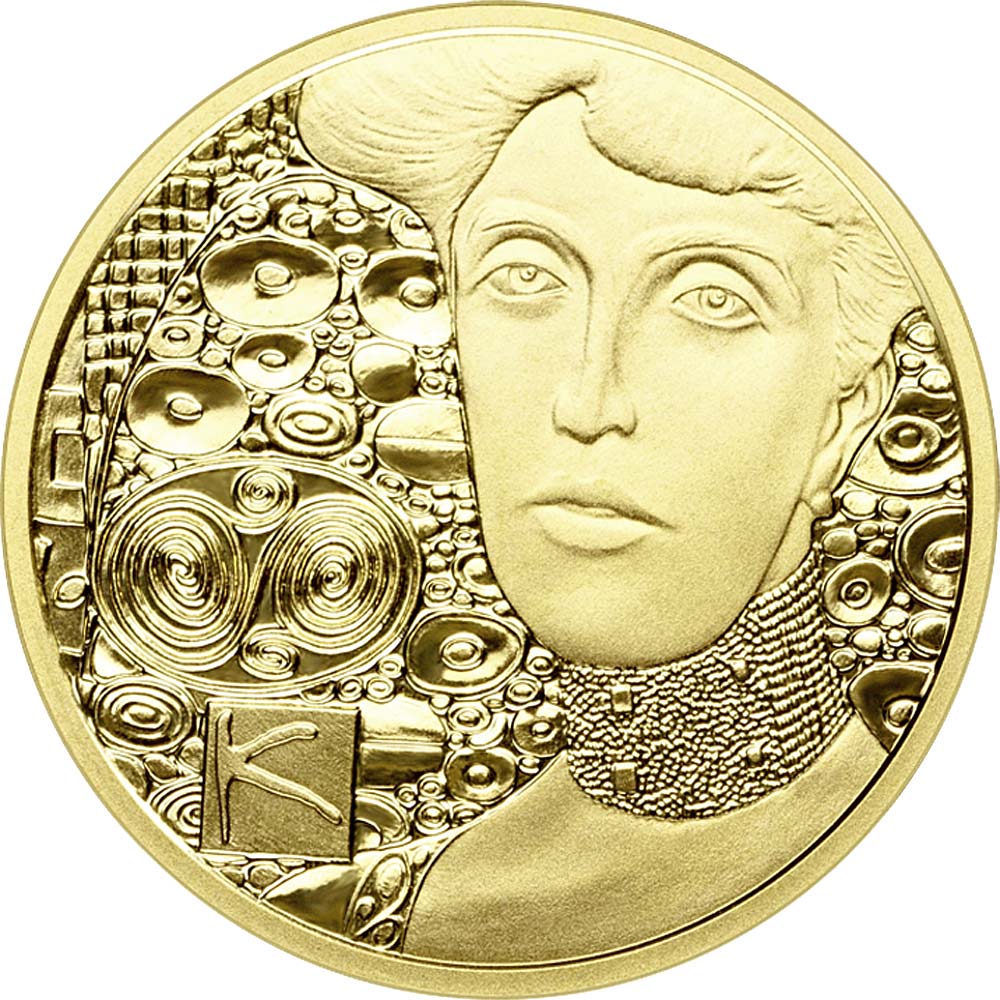



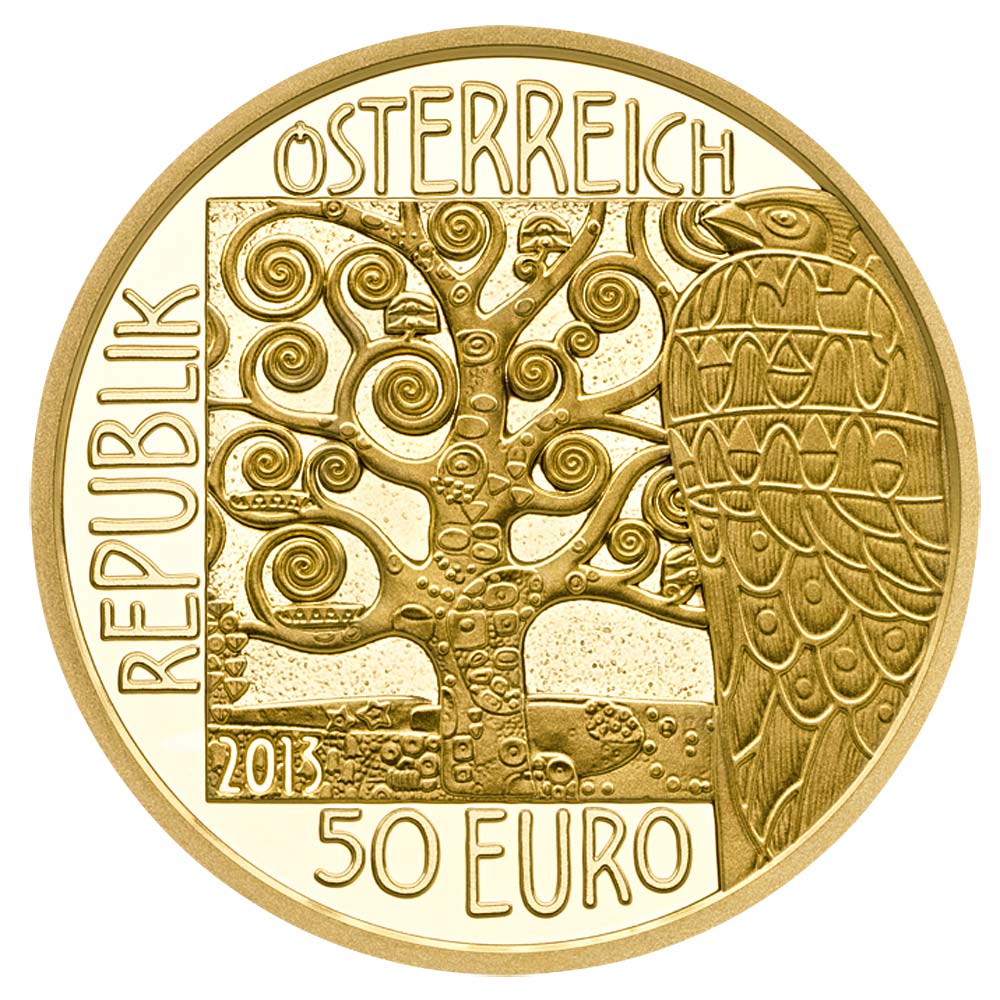


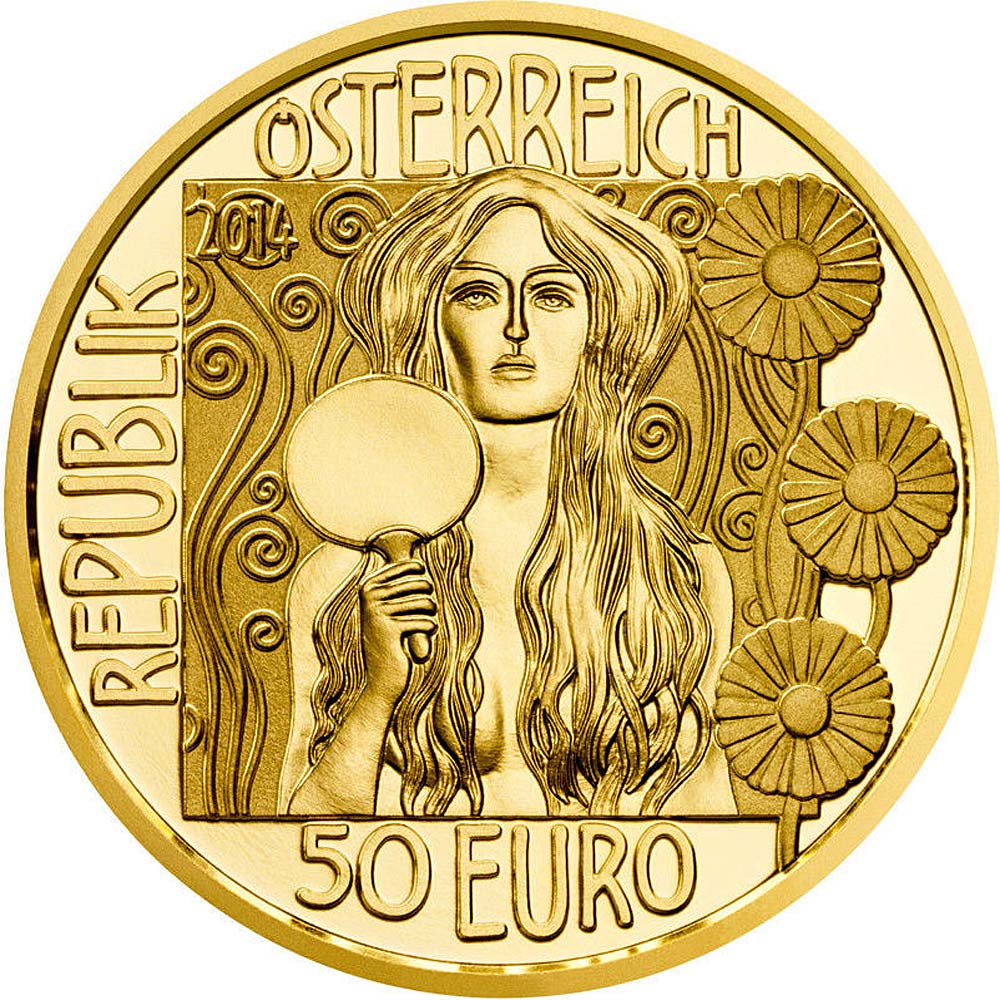
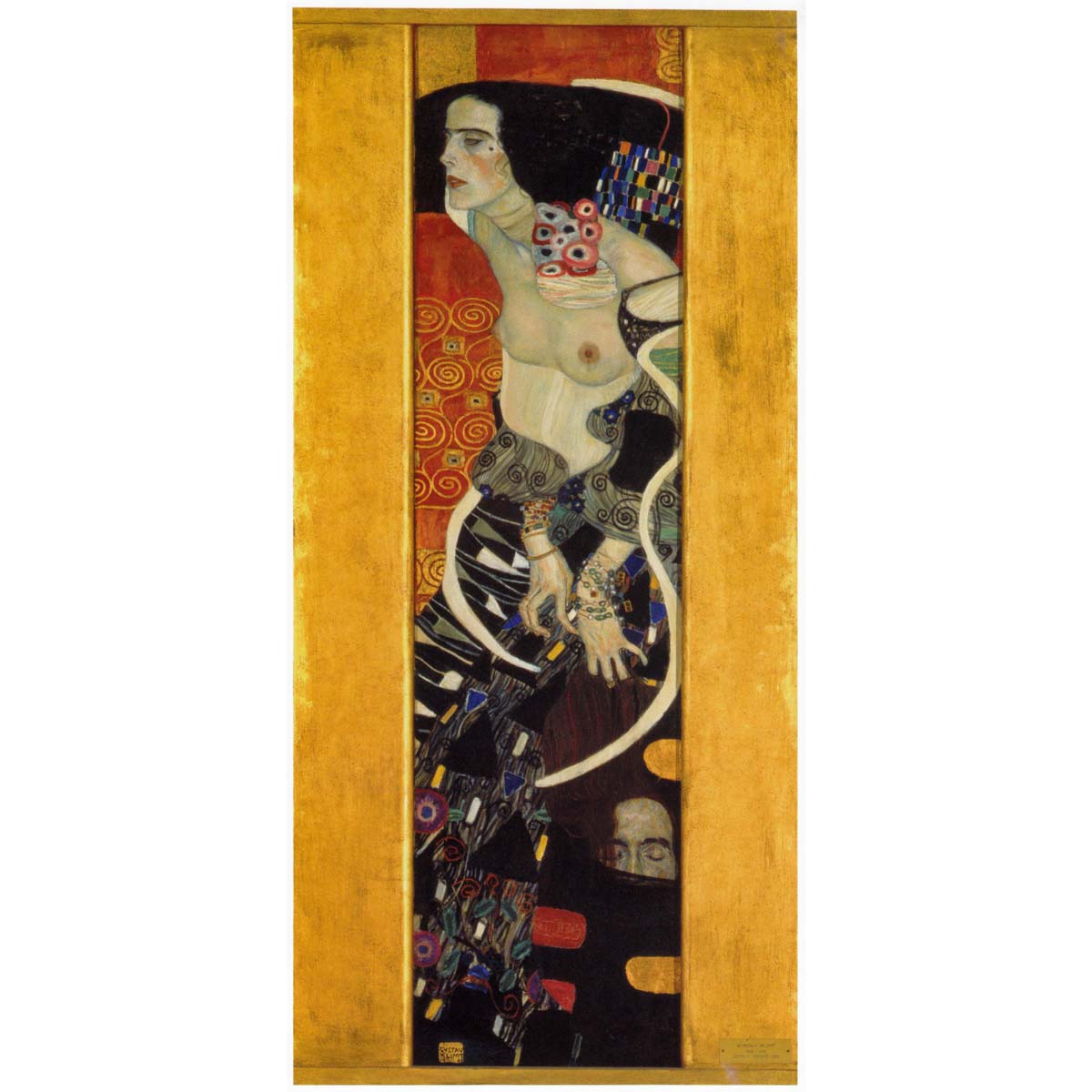



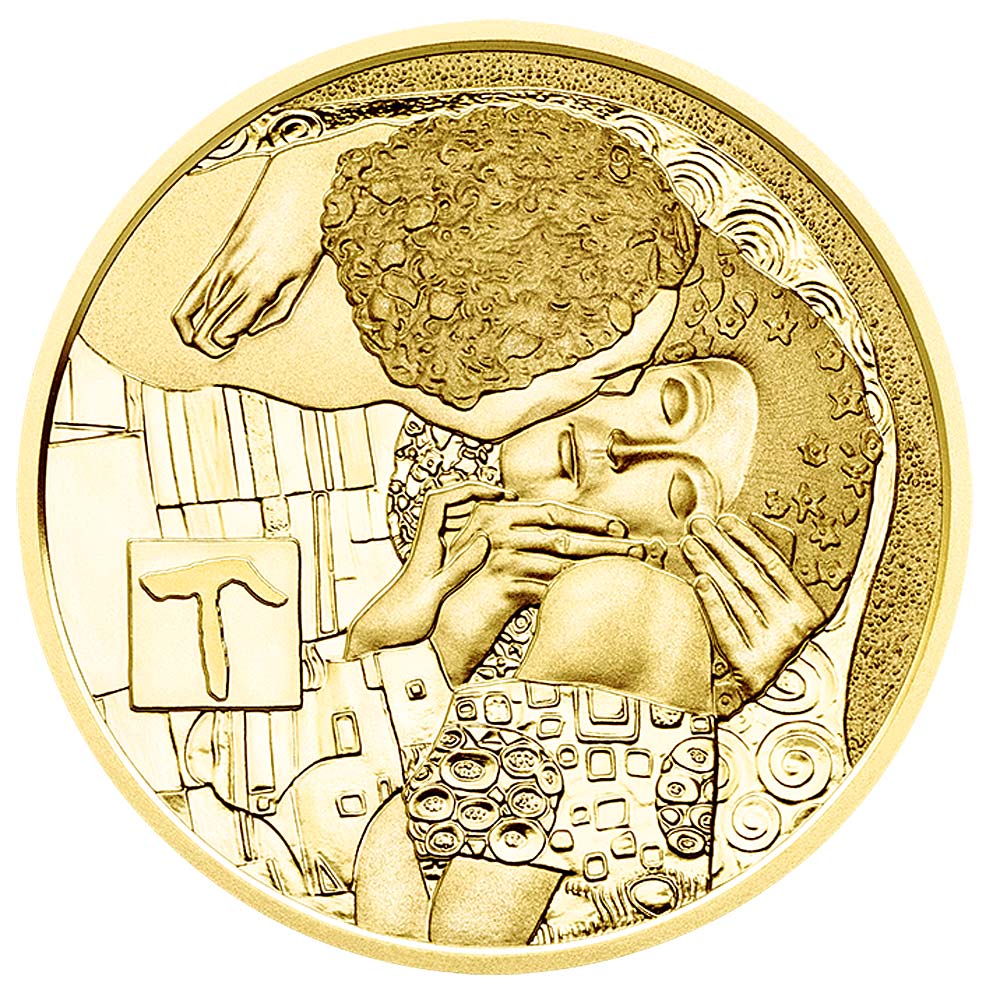

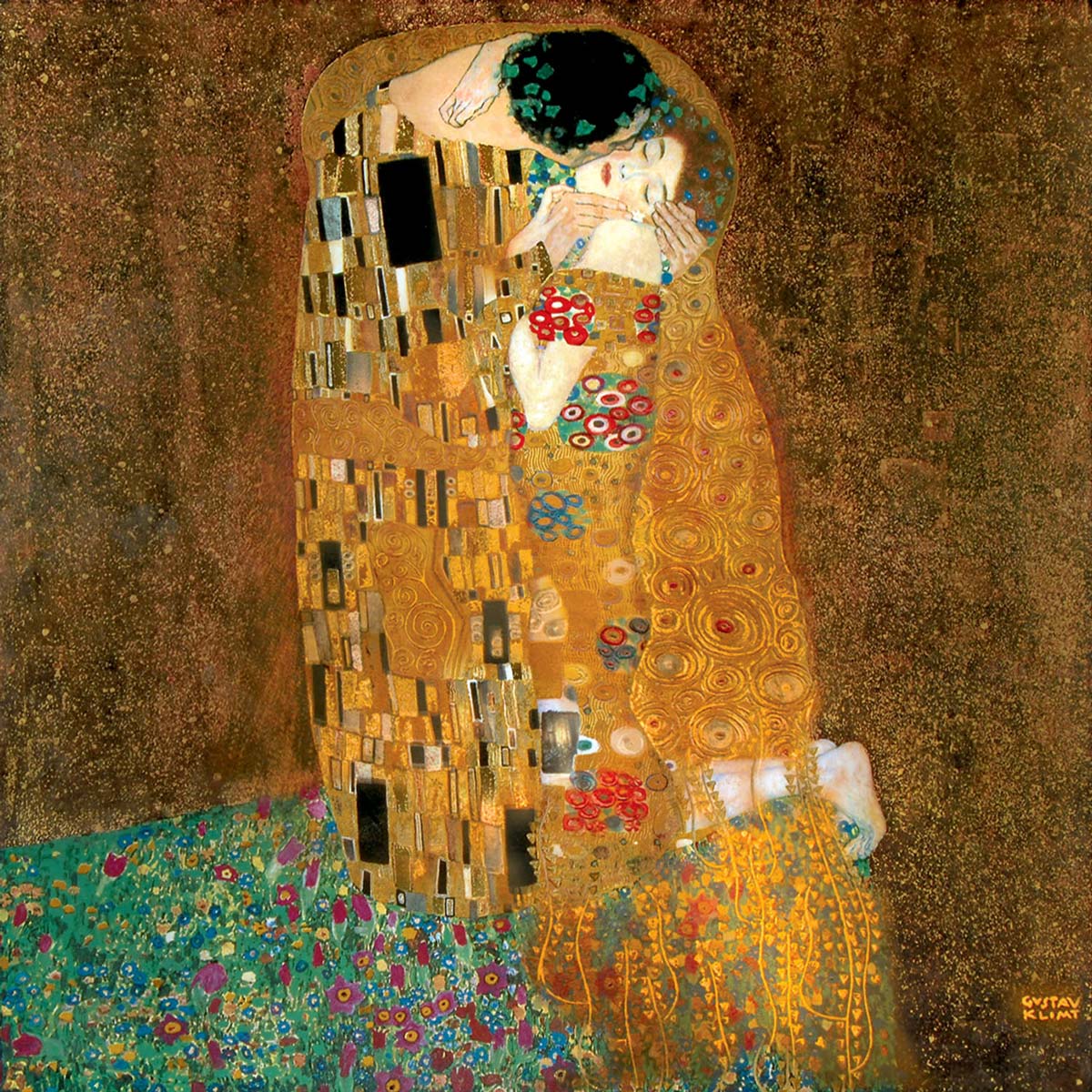
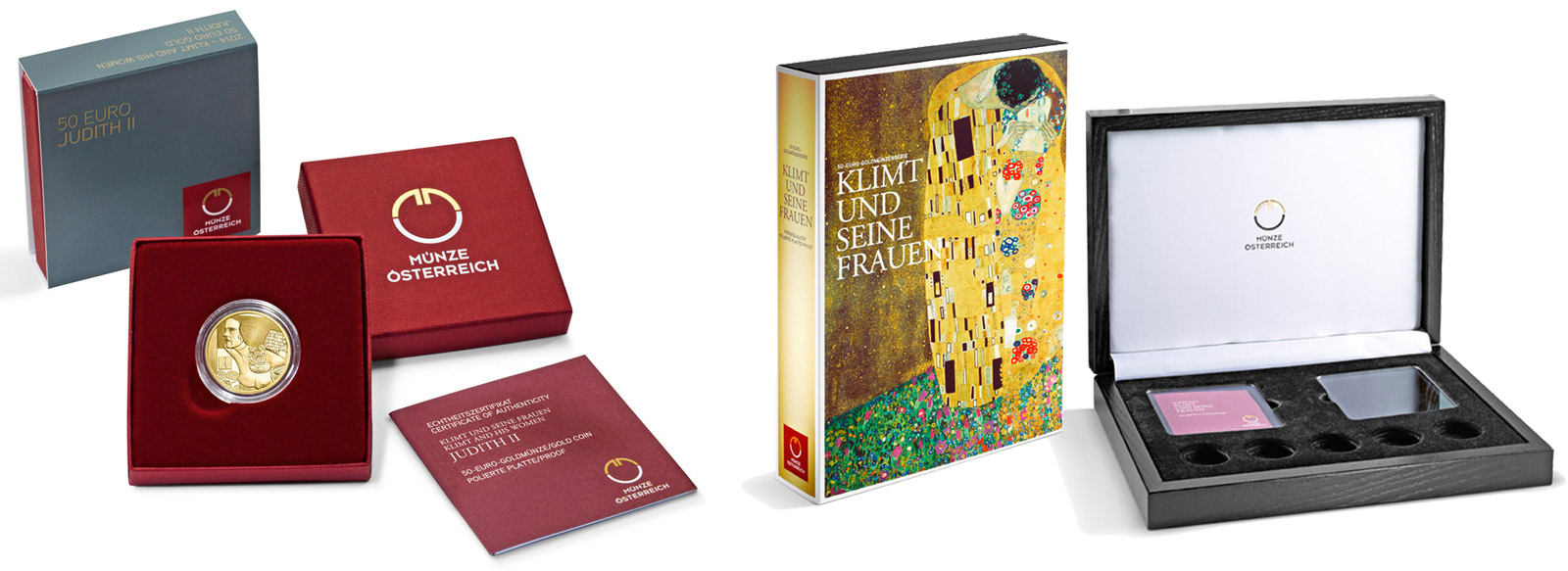
Leave A Comment